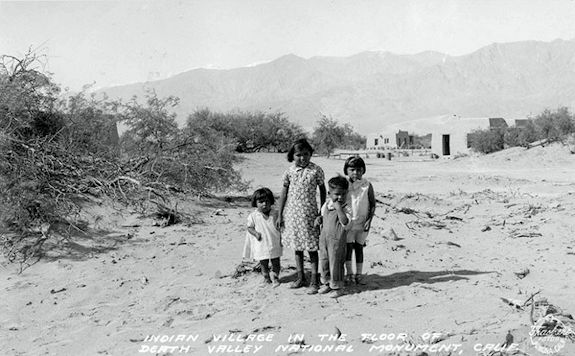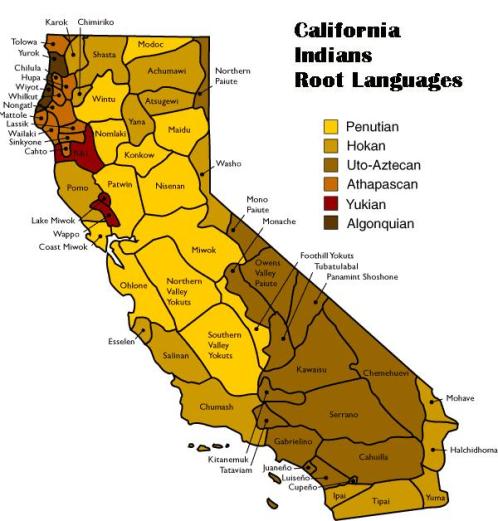The Northern Paiute occupied part of the Sierra in the southeastern part of California and the desert country east of it and also a strip of land in the extreme northeast. They spoke a Uto-Aztecan language from the Western Numic branch.
Native American Tribes of the United States
Recent Posts
Cupeño Indians
23 ViewsThe Cupeno spoke a dialect belonging to the Luiseno-Cahuilla branch of the Shoshonean division of the Uto-Aztecan linguistic stock.
Wiyot Indians
23 ViewsWiyot is the name of one of three culturally and linguistically related groups on the Eel River Delta in the early nineteenth century. They were culturally similar to the Yurok.
In the Powellian classification the Wiyot Indians were given an independent position as the Wishoskan stock.
Later California investigators combined them with the Yurok under the name Ritwan but still later believed that they had established a relationship between them and the great Algonquian family of the east. This allocation is, however, questioned by other ethnologists.
Achomawi Indians
23 ViewsThe Achomawi Indians were originally classed with the Atsugewi as one stock under the name Palaihnihan, the Achomawan stock of Merriam (1926), and this in turn constitutes the eastern branch of the Shastan stock, which in turn is now placed under the widely spread Hokan family.
Kato Indians
23 ViewsThe Kato Indians belonged to the Athapascan linguistic stock, and spoke a dialect peculiar to themselves.
Bear River Indians
25 ViewsThe Bear River Indians belonged to the Athapascan linguistic family, and were most closely connected with the Mattole, Sinkyone, and Nongatl tribes to the south and east.
Kawaiisu Indians
23 ViewsThe Kawaiisu belonged to the Shoshonean branch of the Uto-Aztecan linguistic family, and were a more immediate off-shoot, apparently, of the Chemehuevi.
Death Valley Indian Community
24 ViewsThe Death Valley Indian Community is home to the federally recognized Timbasha Shoshone. This reservation was not formally recognized as an Indian reservation until 1982. It encompasses just under 10,000 acres. President Hoover took the tribe’s ancestral lands to create the Death Valley National Monument in 1933.
Agua Caliente Indian Reservation
23 ViewsThe Agua Caliente Indian Reservation is home to the Agua Caliente Band of Cahuilla Indians. This tribe received federal recognition in 1957. The Agua Caliente Indian Reservation was founded in 1896. A period of forced cultural assimilation followed, including taking Indian children to boarding schools where they were forbidden to speak their language.
Hundreds of Diverse Cultures
The early Native California Indian communities were astonishingly diverse in culture and way of life, ranging from the seafaring Chumash to the agricultural Yuma to the nomadic Modoc.
Native California groups numbered more than 500 individual tribes or bands, spoke at least 100 different mutually unintelligible languages, ate different foods, and practiced different religions. These communities had no alphabets and left no written records for historians to interpret, so what we know about Native Californians before the arrival of Europeans is based on four sources:
- archaeological evidence;
- early records of European explorers and colonists;
- oral histories given by tribal elders in the early 20th century; and
- oral traditions passed down to later generations of Native Californians.
This is a list of Native American place names in the U.S. state of California.
Costanoan Subdivisions and Villages
23 ViewsThe Costanoan language formed one division of the Penutian linguistic stock. Costanoan speaking people lived on the California coast between San Francisco Bay and Point Sur, and inland probably to the Mount Diablo Range.
California Penutian Speaking Tribes
23 ViewsPenutian roots are old in California and expanded after Hokan languages were established in the state. To the extent that language and culture may be related, Penutian was the most typically “Californian” of any linguistic root language. In 1750 AD speakers of Penutian tongues occupied nearly half of California and were a solid block of about 30 groups in the California heartland.
California Indian Languages
25 ViewsCalifornia Indian Languages
Before European contact, native Californians spoke over 300 dialects of approximately one hundred distinct languages. All but sixty-four are extinct today, with many more languages likely to disappear in our lifetime.
California History Timeline
23 ViewsCalifornia history timeline from 1492 to 1906.


